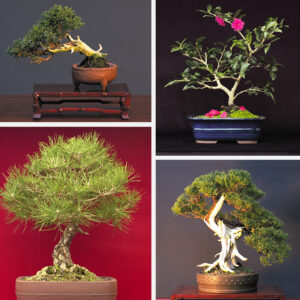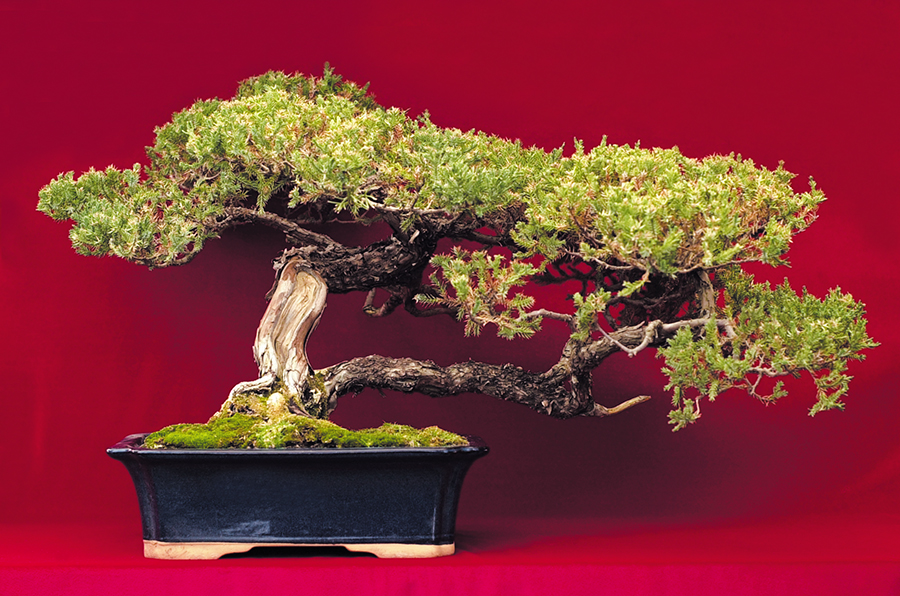Art and nature in perfect harmony.
A beautiful blend of art and nature, bonsai (pronounced bone-sigh) is best defined by the meaning of its combined words: “bon,” meaning a pot or container, and “sai,” which means to plant. Although plants have been grown in containers since earliest times, these miniature re-creations of landscapes with manicured trees and carefully selected rocks are thought to have originated over two thousand years ago in China, and antique bonsai pots from China remain among the world’s most prized containers.
However, a bonsai is much more than a miniature plant in a pot; it is a living work of art created to evoke the very essence of nature, through its individual shape, style, and planting.
Over the centuries, this unique art form was adopted by neighboring Japan, and although both countries have had a significant impact on the development of various bonsai styles and techniques, it was in Japan that a highly refined artistic discipline with ritualized techniques and precise horticultural instructions was developed. It was also the Japanese bonsai display at the Paris Exhibition of 1878 that introduced bonsai to the western world. Another surge of interest occurred in the United States after World War II, and over the last few decades, enthusiasm for bonsai has spread around the world. Most commercial bonsai plants sold in the United States today are imported from China.

The possibilities of bonsai are endless, because so many different plants are excellent choices for this living art form. Clockwise from top left: A member of the juniper family, this juniperus shimpaku bonsai has been trained to exhibit a windswept appearance. Flowering shrubs also can be used, as this camellia japonica—a member of the tea family—beautifully demonstrates. A juniper chinensis, or Chinese juniper, displays a twisted trunk which has been groomed to have an aged look. And the branches and long needles of a Japanese black pine have been trained into an ethereal canopy.
The beauty of a bonsai is, first and foremost, based upon its shape and design, but choosing the right plant depends upon several considerations.
There are several types and styles of bonsai, as well as a number of design styles for plantings. There are single-trunk styles and multiple plantings, and upright, cascading, or twisted trunks. There are windswept, upright, or weeping branches. There are the different root styles as well. Finally, different types of trees can be chosen for bonsai.
